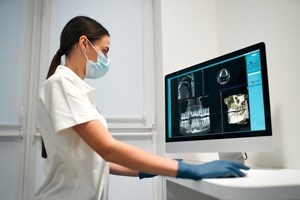Toothbrush-shaped ultrasound developed to monitor gum health
Published: 11/06/2025
Researchers have developed a toothbrush-shaped ultrasound transducer that can provide a less invasive screening for gum disease.
The research published in ACS Sensors reported that the device produced measurements similar to those of a manual probe.
Gum disease is a common condition affecting tissue that surrounds and supports teeth. If left untreated, it causes the gums to pull away from the teeth, creating pockets where harmful bacteria can grow. Currently, manual periodontal probing is the standard way to check for gum disease, but the technique is uncomfortable and can miss early stages.
The researchers have developed a small, non-invasive ultrasound method capable of imaging teeth and gums, including hard-to-reach molars and premolars at the back of the mouth.
Currently, most ultrasound transducers have large heads that cannot access smaller spaces like those in the mouth. Smaller transducers that are about half the length and width of traditional devices are available, but current models have limited image resolution because they are only able to produce and detect low frequencies. To overcome these limitations, the researchers created an even smaller toothbrush-shaped transducer that operates at a higher frequency and can produce high-quality images of teeth and gums.
A less invasive solution
To test the transducer’s accuracy, the researchers used the instrument to measure the gum thickness and gum height of pig teeth. The researchers then repeated the measurements using a manual metal periodontal probe. After analysing the correlation between the two sets of measurements, the team concluded that the ultrasound measurements were statistically similar to those of the manual technique. Therefore, the results support the reliability of the toothbrush-shaped transducer as a less invasive technique for monitoring gum health.
Jesse Jokerst, lead researcher, said, “We designed this tool to meet the realities of clinical dentistry. It is miniaturised, accurate and easy to use. Future work will use this device with patients to image below the gumline, where we will monitor treatments and diagnose earlier to reduce dental pain and help patients keep a healthy smile.”
Author: N/A













